
Review. Behold, my children. My magnum opus: Surf Nazis Must Die
More Videos
Published
5 years agoon
By
J.M. Brannyk“There is no way that you are ever going to convince me that this is a good movie.” – My Glorious Spouse, 2020
Here we are, at the precipice of greatness. Finally.
Let me tell you a story. A love story.
Back in the old days of chunky rental boxes of VHS tapes, I remember first seeing the glistening box in the Horror section of Movie Mania. Back in those times, children, one would hitch up their horse and cart, traveling three miles in the snow, uphill, to rent a free horror movie every Monday night. And, after the arduous trek back, would blow the dust from the VCR player and jam that precious tape in to watch a hidden relic of the past. And it was worth it. It was damn well worth it.
One of those Mondays was very special for me and was the day I watched “Surf Nazis Must Die”. I fell in love – hard. I don’t want to say it changed my life, but here I am reviewing movies and getting paid, so you tell me, pal.
When I first met Glorious Spouse as an awkward teenager, this was a movie I shared on one of our dates. When I met new friends, I shared this. When I met GS’s friends, I shared this. It was not only a beautiful piece of schlock I admired to be shared, but also a litmus test; an endurance and reactionary experiment for me to gauge them. Did they see what I saw??? Could they feel what I felt?
No. Obviously. You saw the quote and obviously it wasn’t a deal-breaker, but it became the anathema I earned, as in, “Yeah, but you also think ‘Surf Nazis’ is good (so your opinion of movies is questionable)”.
Yeah, I did think it was good.
And you know what…I friggin’ still do.
So, my friends, let me try to open your mind and bring you into the nightmarish world of loss, madness, and revenge. In honor of Black History Month and in memory of Gail Neely, who played one of my favorite protagonists in all film history, I present to you: the review and exploration of Surf Nazis Must Die.

The Plot:
In the near future, a devastating earthquakes leaves the California coastline in shambles. The beaches are controlled by gangs, one of them being surf-friendly Neo-Nazis under the regime of “Adolf”, the self-proclaimed “Führer of the new beach”. Using the calamity and chaos to his advantage, he gathers the other gangs with the message of join his order or die on the sand.
During the same tragedy of the earthquake, widower Eleanor Washington has lost her only home. Her adult son helps her into her new residence, a senior home, where she finds it difficult to adapt. She’s seen as a trouble-maker and instigator – smoking, gambling and not being complacent in her new rigid and infantilizing atmosphere.
The two stories intertwine when Mama Washington’s son is viciously murdered by Adolf and his gang. After losing the only thing in her life, Mama begins her descent into anger, madness and revenge against those who took her son’s life. Let it be known that Surf Nazis must die!!!
The Nazis:

Most of the narrative is focused on the Surf Nazis and their interactions. Even the first shot is that of a young child, punk hair and cheeks painted with swastikas, shouting back cadenced authoritarian rhetoric to a stoic “Adolf”, within a group of other young children. Some of the Nazis have original Reich monikers like Eva, Adolf’s bitch (her words, not mine), and Mengele (the Valley-speaking Q who creates surfboard switchblades and whatnot). However, others do not share in the Nazi heritage: Brutus (the sensitive fighter), Hook (Alex from A Clockwork Orange meets Captain Hook), and Smeg (oh, I’ll talk about him later).
And then we have Adolf. Who is….dramatic. Laughably and adorably so. So much drama in this one. Drama and dreams. Dreams of leading all of the gangs of the beach (kind of like the beginning of Warriors, but as a Nazi d–head).
The Nazis live on the beach and in abandoned buildings, struggling through their existence by extorting other gangs, stealing from “normal” people, and eliciting the help of the young and dumb (we’ll get to Smeg, don’t worry). They are not powerful, really. They are sad. They are taunted by the other gangs. They sustain themselves by killing and eating wild pigs (?). And just as often as they band together, they tear each other apart. They are vicious and damaged. They are fumbling in their pursuit of power, and aimless in their violence. They have no agency, engagement, or efficacy.
The Mama:

Enter our protagonist. And yes, it could be easy to point out that there are certain characteristics, maybe even certain stereotypes, that are part of the “Mama” Washington character. She is a strong Black woman – Bible-carrying but is also sassy and sharp-as-tacks. She smokes cigars and gambles with her new friends at the senior home, telling them that she’s going to bring life into “them bitches”.
I admit, there are almost Madea-esque traits, but I would say whereas the usual Older Black Female character is sometimes a cruel, shrieking portrayal with a touch of bitterness, Gail Neely plays Mama with so much heart and warmth, it’s hard not to be endeared by her performance. There are some moments of audacity, but it’s never cruel; it’s at the core of the character. There are genuine moments of tenderness and vulnerability within her strength and conviction. Gail Neely brings such life and grit to this character. She is an unconventional hero and badass. Yes, this character was written by a white male, but I believe it was done so with endearment to the character and her role as victim and avenger.

And this is evident by the juxtaposition of her core concepts and motivations from the Nazis. She is the anti-Adolf. She is older. She is woman. She is Black. She is a nurturer and mother. She has purpose. She has agency. She has engagement with those around her. And you bet your sweet toots that she has efficacy. Mama Washington has power in her own life, even when she is deemed powerless (**see chainsaw vs tree scene**). She is the very opposite of Adolf and the Nazis, and it’s utterly surprising find something so rounded and in-depth in something so…Troma, let’s say?
The 21st Century Schizoid Man
There are really good shots in here. Really. Very clever camera work, no joke. I wrote that down a few times in my most recent viewing.
However, the most memorable and recognizable shot from the film is the Schizoid Man. In this incredibly dramatic point, Mama comes in first contact with one of the Nazis as he’s describing the death of her son. She grabs him and slams his head against a graffiti-painted wall. But it’s not just graffiti:

This is actually King Crimson’s album cover for 21st Century Schizoid Man, which is also featured as a song of general chaos, war imagery, death, destruction, and the desensitization of the human spirit from those elements. It was most likely written in response to the Vietnam War.
However, in this powerful moment, the art of the album is appropriated and re-contextualized. We see the pale head of a Neo-Nazi pushed against the mouth of a Black man, silently screaming in anguish. We see the older Black hand of a victim pushing the young and naïve racist perpetrator into that scream, into that direct confrontation of his superficial ideology and his subservient actions. During which, she becomes numb to the violence (and faceless) she is subjected and now a part of.

I could probably write forever about that scene. I could write forever about most scenes that feature Mama Washington because the incredible job that Gail Neely does. Let’s everyone take the day off of work to discuss how incredible her performances are!

The Homework: Thick Brain Roll Juice
I read up some for this one. I did my homework. Originally, I actually was going to argue that they aren’t really Nazis, but counter-culture, living in a depraved environment with limited resources because they are bored, “too hip” and white.
While some of that may be true (youpieceofcrapSmeg), the homework I did proved me wrong. Terrifyingly wrong.
It’s easy to watch this film for the laughs, for the fun, for the tie dye beach gang, Adolf’s awkward line reads, the gobs of slow-mo surfing, and Gail Neely’s poetic performance.
But the fact is that it’s not just a fun vacuum of cinematography and over-the-top acting. Watching this, it’s easy to dismiss this as a campy romp. Like I said, I was originally going to talk about turf wars and lack of seething resentment because they didn’t really strike me as Nazis. Assholes, yes. Nazis, no.
In fact, the very first paragraph of An Ethnographer Looks at Neo-Nazi and Klan Groups The Racist Mind Revisited by Raphael S. Ezekiel speaks exactly to that point and to my casual dismissal,
Americans today often learn about Nazis and the Ku Klux Klan through television clips of rallies or marches by men uniformed in camouflage garb with swastika armbands or in robes. These images often carry commentary implying that the racist people are particularly dangerous because they are so different from the viewer, being consumed by irrationality. The racists and their leaders are driven by hatred…
Raphael S. Ezekiel
The same can be said for the films that we watch, Surf Nazis Must Die included. How Hollywood portrays the Nazi (Neo- or otherwise) changes over time. Our limited scope of understanding changes with those waves of popular culture, whether one is the impact of the other.
In a paper by Geoffrey Cocks entitled Hollywood Über Allies: Seeing the Nazi in American Movies, Cocks describes the road to Surf Nazis and beyond in the public cinematic sphere:
By the late 1960s, a skeptical, critical, and even cynical consciousness about the contemporary world had entered even Hollywood. Newly empowered teenage consumers and the Vietnam draft made the American film Nazi-unlike 1940s war films-big antiwar box office material because the Nazi now stood for any totalitarian oppression for young radicals outraged by American racism and the war in Vietnam. Bank of America became Bank of Amerika, and police became “fascist pigs.”
The 1970s in America brought a wave of still more problematic interest in Hitler, the Nazis, and the Holocaust, in which a mix of agnosticism, cynicism, hedonism, and nihilism prevailed over 1960s iconoclasm and idealism. The Nazi became a “floating signifier” for trivial fanaticism or madness: a “lawn Nazi,” a “feminazi,” a film demanding that Surf Nazis Must Die (Peter George, 1987)
From the 1980s on, ever more of international cinema hewed to the Flollywood-style entertainment movie. With the exception of a few films about American neo-Nazis, the Nazi and the German became less topical and central, even those about the war, and so tended to serve only the blandly realistic or the distantly metaphorical. But the Nazi yet retains his cinematic potency.
The weakness in Tarantino’s postmodern play is the weakness that had been growing and maturing in film ever since the Second World War: cinema grows so self-referential, so caught up in the economic conversation between Hollywood and American culture, that it ceases to be critically reflective.
Cocks, Geoffrey. “Hollywood Über Alles: Seeing the Nazi in American Movies.” Film & History: An Interdisciplinary Journal, vol. 45 no. 1, 2015, p. 38-53. Project MUSE muse.jhu.edu/article/589137.
So, let’s dumpster-dive into the history a little to separate fiction and fact, or maybe even find some similarities. Before the 80’s, when this movie was filmed, the KKK was the anchor for much of the white power movement and didn’t mix with the emerging Nazi party in the US. But then the 80’s came with its Flashdances, Reaganomics, and Rubicks Cubes, and the two more or less started to merge into a smelly shitstain of grossness, and “concepts/symbols started being used indiscriminately between the groups“. (Ezekiel, pg. 52)
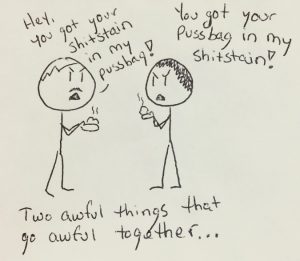
This happened partly because “some separatists feel that the old Klan is a ‘dinosaur,’ not aggressive and technical enough in its approach of asserting dominance and power. This view has led to the formation of other divisions of hate groups.” (Anderson, James F., Laronistine Dyson, and Willie Brooks Jr. “Preventing hate crime and profiling hate crime offenders.” Western Journal of Black Studies 26.3 (2002): 140) By 1994, (four years before Surf Nazi’s first DVD release) different watchdog groups estimated hard-core militant membership around 23,000 to 25,000, with approximately 150,000 sympathizers who subscribed to the ‘zines, and another 450,000 people who read the issues for the articles but didn’t buy. (Ezekiel, pg. 52-53)
During that time, between 1955 and 1998, white racists were responsible for more than a third of deaths related to domestic terrorism between, excluding the 168 individuals killed in the Oklahoma City bombing (Parkin, William S., et al. “Ideological Victimization: Homicides Perpetrated by Far-Right Extremists.” Homicide Studies, vol. 19, no. 3, Aug. 2015, pp. 211–236, doi:10.1177/1088767914529952.). And people of color are more often. Just in 1997, of the hate crimes committed, 8,049 bias-motivated criminal incidents were reported. Of these incidents, 4,710 were motivated by racial bias (Anderson).
But…but surfing! And….fun! And….switchblade surfboards! They just silly-billy Nazis!

Sure, let’s talk about the group – it’s dynamics and how it operates.
As previously mentioned, the first shot of the movie is at youth gathering with Adolf, establishing the supremacy of the Surf Nazis as the masters of the beaches. In fact, that the beach is in a bitter and bloody turf war, mostly because of the Nazis, which isn’t that surprising: “The movement makes its claim, in the ideology, to a turf and declares its role as defending that turf.” “…an ideology that glorifies toughness and fears tenderness or nurturance as weakness.” (Ezekiel) And we’ll circle back to the high tension created by them, too, so put a pin in that.
Let’s first talk about the one who pulls it all together. Even with his campy flair for the dramatic, Adolf still manages to manipulate and lead his group and terrorize the other gangs. This is well-put by Ezekiel in a few different sections:
The power to attract members comes from the leader’s certainty and his capacity with words and body to be the living expression of the resentment and anger of the listeners. Moreover, he can make his listeners feel that they are part of something that is happening, that these are not empty words.
In most cases, the leader is not extremely racist. Racism is comfortable for him, but not his passion. At core, he is a political organizer. His motive is power. Racism is his tool. He feels most alive when he senses himself influencing men, affecting them.
His disrespect includes his followers. He respects only those, friend or foe, who have power. His followers are people to be manipulated, not to be led to better self-knowledge.
We see this demonstrated in different ways, like the way he treats Eva, the way he beats Mengele, and his general indifference to the others. He is aloof, but intense, drawing on each group’s fears and insecurities…via drama!

Now let’s talk about “Smeg”.

He’s also a piece of shit who comes from a loving, providing, un-apocalyptic home. His mom even tucks him in at night as he whines that he can’t go and play with Adolf and the rest. This is where you realize that civilization hasn’t crumbled. People still live in nice middle-class homes. People still go to work. People watch TV. People drink New Coke. People are existing and thriving, not living in the beach slums, eating wild (?) pigs. And to do so is by choice.
The apocalyptic backdrop is a facade as a means to an end. The disruption of the earthquake actually means very little, as any situation real or imagined, will have the message of apocalypse, as it is a means for Adolf to control and manage the group to do his bidding:
Any measure is justifiable in this war for survival. If innocent people die, it is unfortunate but a given in a war of survival. All this is heard repeatedly in leadership presentations, and its apocalyptic energy animates the larger movement gatherings.
EZEKIEL, RAPHAEL S. “An Ethnographer Looks at Neo-Nazi and Klan Groups: The Racist Mind Revisited.” American Behavioral Scientist, vol. 46, no. 1, Sept. 2002, pp. 51–71, doi:10.1177/0002764202046001005.
American Nazism’s historic preoccupation with society’s decay and racial erosion demonstrates its anticipation of the arrival of a catastrophic new millennium.
Brad Whitsel (2001) Ideological Mutation and Millennial Belief in the American Neo-Nazi Movement, Studies in Conflict & Terrorism, 24:2, 89-106, DOI: 10.1080/10576100117722
It’s not that the world is in chaos, the Nazi perceive and perpetuate the idea that the world is in chaos to justify their actions – whether its eating a wild pig (?), stealing a purse, or killing a Black man…
Let’s talk about Leroy’s Death (played by Robert Harden).
One study was particularly heartbreaking as it pieced a very tight puzzle to Leroy’s death in the movie to actual homicide victims of Neo-Nazis. Trigger warning; it’s really, really sad.
Victim–offender relationships show that 72.6% of victims had no prior knowledge of their killer(s)
99% [of racially targeted people] (or 59.2% of all victims) were killed because of something they represented, whether a specific race, religion, or even government. Here, the offender had no knowledge of the victim or their personal actions, only that they represented the population the offender was targeting.
Anti-race/ethnic minority victims were also killed more often by a knife, blunt object, or bodily weapon when compared with the anti-abortion and anti-government victims.
…almost 30% of anti-racial/ethnic minority victims were killed while walking or driving on the street.
These victims [racially motivated] had the most violent deaths. Often excessive force was used to beat them to death with blunt objects and bodily weapons. Mutilation and overkill were not uncommon.
The variance in overkill and modus operandi also could be a by product of a subculture of violence, such as those held by neo-Nazis and skinheads.
Parkin, William S., et al. “Ideological Victimization: Homicides Perpetrated by Far-Right Extremists.” Homicide Studies, vol. 19, no. 3, Aug. 2015, pp. 211–236, doi:10.1177/1088767914529952.
So….now what?
This is a very real reality that is still happening to this day, especially as the growth of hate groups and crimes have increased dramatically over the US, and even more, that they are changing. They may not be huge groups, but they are influential groups and they evolve. As two researchers put it:
Social movements in the cultic milieu are by no means stable, nor do their beliefs or organizational patterns remain constant.Rather, groups in this constellation tend to be ephemeral and are governed by a lifecycle process. Over time, these collectivities ultimately fractionate and, in doing so, give birth to new groups. The process is cyclical and facilitates the recycling of ideas (and groups). This continual process of cult birth, reformation, and death suggests that the cultic milieu is a permanent part of society, while the individual cult is a transitory phenomenon.
Brad Whitsel (2001) Ideological Mutation and Millennial Belief in the American Neo-Nazi Movement, Studies in Conflict & Terrorism, 24:2, 89-106, DOI: 10.1080/10576100117722
Low activity is not equivalent to no activity, particularly when white supremacist activity spikes in response to major social change like the election of the country’s first black president.
Cooter, A. (2011), Neo‐Nazi Nationalism. Stud Ethn Nation, 11: 365-383. doi:10.1111/j.1754-9469.2011.01126.x
As fun and campy as this movie is, it is based on fact and fantasy. Unfortunately, in real life, Mamas don’t get to but guns that “take a head off a honkey in twenty paces” and exact revenge. They exist in a culture that created the killer and perpetuates racism (whether loud or quiet) via complacency and institutionalized undertones. And do so, in our norms and conventions, silently.

And it’s easy to be complacent and to not understand the institutional affect when you’re far-removed. It’s a understandable reaction to watch this movie and not identify with any of the Nazis because they are so extreme. They cannot be us. We don’t kill people. We don’t paint swastikas on our surfboards.

But…I just want to have fun and watch my movie 🙁
Of course watch this movie and have fun! Watch the hell out of it – I love it! Remember, this is a love story. Enjoy the camp, enjoy the revenge and goofy surfing. It’s there for you to enjoy and love as your own.
But it’s also a great moment to contemplate, to take a step back and think, especially for us honkeys (we honkeys?). Some great advice for this can, of course, be found in multiple sources, but taking from Ezekiel’s final thoughts on the matter in his paper on Neo-Nazism in America:
Probably the greatest effect of White racism today is its capacity to slow institutional change. Policies that help institutional racism to continue to flourish do much more to hurt minority people than do hate crimes.
And it is worth noting that the neo-Nazis are not totally alien to White Americans. A social attitude does not exist in the mind as an isolated single entity. Real attitudes, or orientations, are laid down throughout life in layer after layer.
The task is to get acquainted with those layers of oneself—to learn to recognize them and not be frightened by them. It is not a disgrace to have absorbed some racism. It is a disgrace not to know it and to let those parts of ourselves go unchecked.
It’s easy not to have a switchblade swastika board, but it’s becomes convoluted if you defend saying the n word, or roll your eyes at #whiteoscars. Its the latter that fuels the former and is the foundation on which its built.
The Bottom-line:
Oh…you’re still here? That’s surprising.
 (5 / 5)
(5 / 5)
Don’t judge me.
When not ravaging through the wilds of Detroit with Jellybeans the Cat, J.M. Brannyk (a.k.a. Boxhuman) reviews mostly supernatural and slasher films from the 70's-90's and is dubiously HauntedMTL's Voice of Reason. Aside from writing, Brannyk dips into the podcasts, and is the composer of many of HauntedMTL's podcast themes.

You may like
3 Comments
Leave a Reply
Cancel reply
Leave a Reply
This site uses Akismet to reduce spam. Learn how your comment data is processed.
Doctor Who
Identical: Yes. The Same: No – Exploring the World of AI Reconstructions in Doctor Who
Published
2 weeks agoon
March 19, 2025By
J M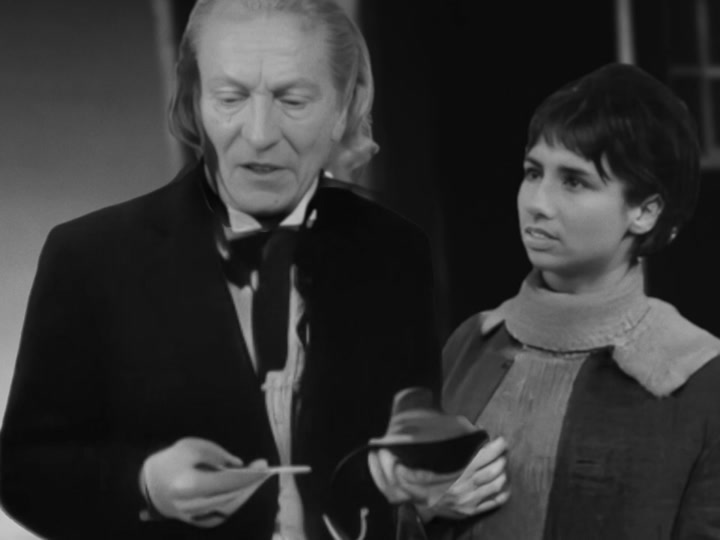
The second half of 2024 was a bit of slow for Doctor Who news. Ncuti Gatwa’s first season finished in June, and the Christmas special was months away. Comics and audio plays continued, and a Blu-Ray set of Season 25 was released – but that was all.
However, what was new and exciting was a spate of unofficial recreations of missing Doctor Who stories from the sixties. Re-animations of missing stories have occurred previously, both officially by the BBC and unofficially by fans. However, animation production time means it’s rare to have more than a few episodes a year. However within the space of six months, forty-four recreated episodes were released, with the promise of more to come.

The reason how so many stories have been released so quickly is artificial intelligence (AI). These reconstructions are Generative AI, funded by professional songwriter, film producer, and fan, Ian Levine. This decision to make Doctor Who AI Reconstructions, to put it mildly, has been controversial online.
But is it worth it, in order to having otherwise missing stories returned to us? I’ve examined many of these Doctor Who AI reconstructions, and the discourse around them, to find out.
In Brief – Missing Episodes
A decent proportion of Doctor Who’s earliest years shockingly does not exist anymore. Doctor Who is one of the BBC’s biggest revenue raisers, and most famous show around the world. However it was not always the case.
When Doctor Who first began in 1963, the idea of keeping media was not really considered. Home video did not exist, and would not exist for two decades. Repeats were rare, due to the costs at the time to store old material and pay people involved in them. Also, old film presented a fire hazard. So it was often disposed of.
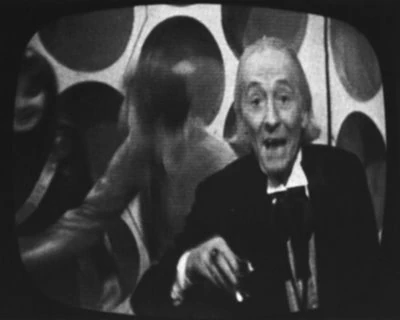
Despite this, Doctor Who is fairly lucky compared to other series. Firstly, fans at the time recorded the audio of each story. This means even the first ever Christmas Special – “A Feast of Stephen,” never broadcast internationally or repeated, still exists as an audio.
Doctor Who is also lucky because of only six seasons are not complete. In addition, of those six seasons, only half are missing only episodes from one or two stories. This allows us to get a feel for the early years of Doctor Who in a way fans of other series, like “Quatermass” and “The Avengers” aren’t able to. And part of the reason most of these early seasons survive is due to Ian Levine.
Who is Ian Levine?
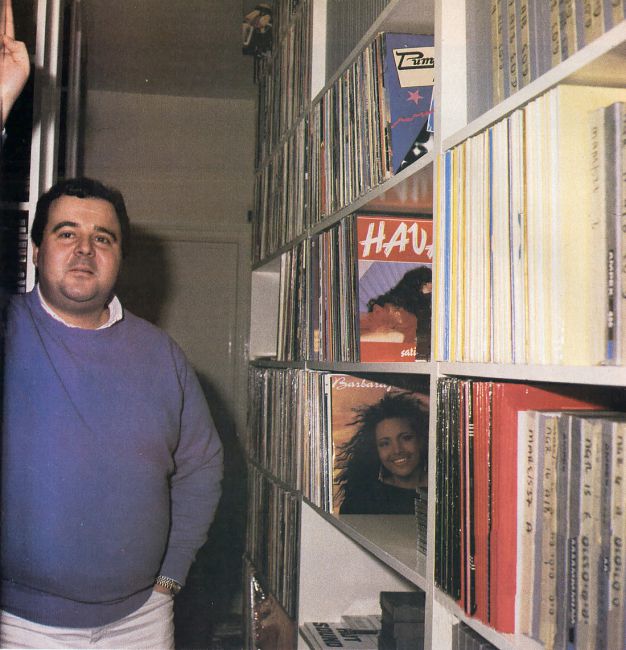
Ian Levine professionally is a songwriter and DJ. He has written and produced records connected to such bands as Take That, Pet Shop Boys, Bananarama and Bucks Fizz. His total sales exceed 40 million records.
He is also well known as a prominent Doctor Who fan. There are many prominent Doctor Who fans. The series from 2004 onwards has been largely made by prominent Doctor Who fans of the 70’s and 80’s. Many of these fans contribute to Doctor Who in official ways. For instance, many older fans have written books, or audio plays. All three showrunners for the modern series would be considered prominent fans from the nineties. For Ian Levine, his main contribution is seeking to find and restore missing episodes of Doctor Who.
This work started in 1978 where Levine reportedly requested the permanent halting of old episodes of Doctor Who. At the time the idea of home video was being considered, leading to more reasons to keep old film. Levine also claimed to have rescued the first ever Dalek story from being sent into a furnace. Following this, he began purchasing private copies of the remaining stories, and attempting to return them to the BBC.
He also connected with the Doctor Who Production Team of the eighties in other ways. This included composing the theme tune for the spin-off series “K-9 and Company”, and the protest/charity album “Doctor In Distress.” His was also consulted about continuity during seasons eighteen to twenty-two.
However, he also gained a notorious reputation as obsessive in an unappealing way. During the 1985 Doctor Who hiatus, Levine was encouraged by Producer Jon Nathan-Turner to use protest the decision. Levine argued against the decision on television, and smashed his television with a hammer, and inviting newspapers to photograph it.
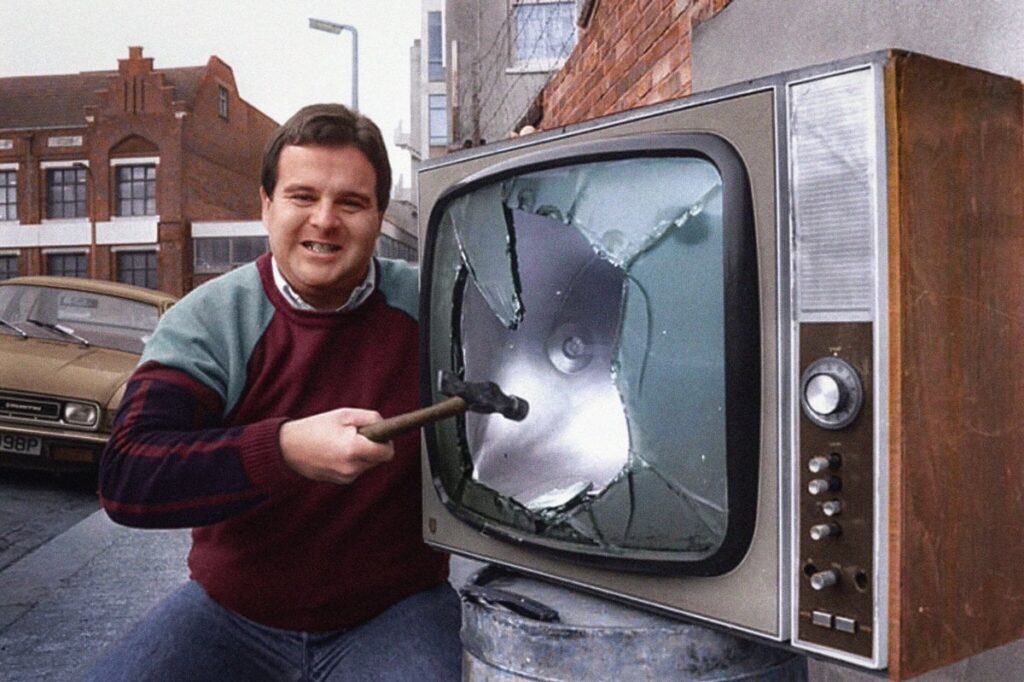
So he is fan who has both done great things, but also sought notoriety and negative attention.
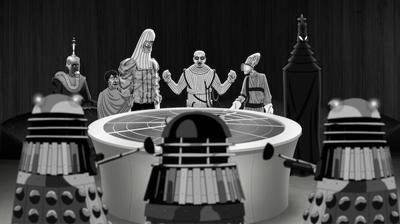
More recently, Levene has worked with animating missing or incomplete episodes. This started in 2010 with “Mission to the Unknown.” This was not allowed to be shared or sold due to it being made without BBC authorization. In 2013, Ian hired an animated reconstruction of the unfinished story “Shada.” This version used pre-existing footage and new audio to create a finished product he hoped could be licensed. However, the BBC chose not to. Instead they made their own animated version that was released four years later.
- Join the Doctor (Tom Baker), Romana (Lalla Ward), and K-9 (voiced by David Brierley) as a visit to a Time Lord living incognito on Earth leads to a desperate race to a distant prison planet
- A BBC strike halted filming of this never-broadcast Baker six-episode serial written by “The Hitchhiker’s Guide to the Galaxy” author Douglas Adams
- Christopher Neame, Victoria Burgoyne co-star
Last update on 2025-03-16 / Affiliate links / Images from Amazon Product Advertising API
Subsequently, Levine made comments regarding Jodie Whittaker as the first female Doctor which were deemed by many to be sexist. Levine responded by publicly quitting the fandom, though later created his own private Doctor Who Facebook group.
This group has now become the location where his AI recreations he has funded and received donations for are shared.
The Doctor Who AI Reconstructions – How to Access
The Facebook Page: “Ian Levine’s Facebook Group” requires an agreement to two questions to join. Firstly, you must agree to respect the right to criticize Jodie Whittaker. Secondly, you must recognise this is Ian Levine’s group for sharing his opinions on Doctor Who. Agree to all this, and you’re allowed in.
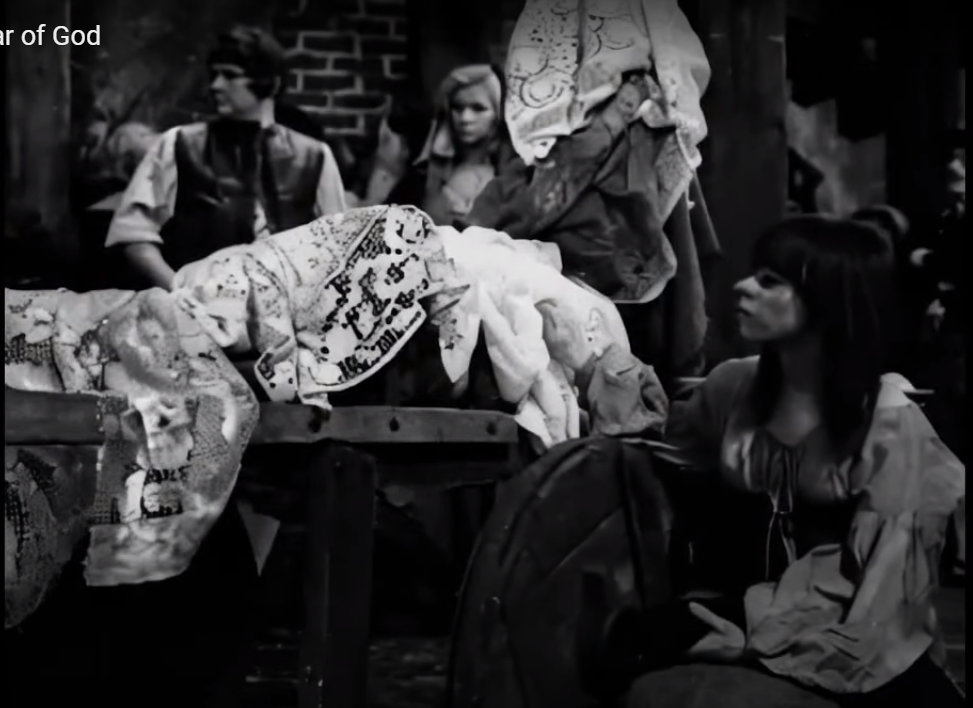
Inside the group, Levine has shared around twenty videos. This includesall of “The Dalek Masterplan,” “The Massacre,” and “The Savages.” However for the remainder, you must make a donation of fifty pounds, to become a contributor to the series.
Once your donation is confirmed, you are authorized to join the separate contributors group, for contributors only. This is where all the current videos being made are released.
Except…. None of these videos are unavailable privately. Ian Levine has placed them all on Youtube. They are unlisted, so they cannot turn up in either a Google or YouTube search. However, if you have a direct link or URL to them, they are accessible to everyone. Unlike other systems like Patreon which restrict content to only certain subscribers, nothing stops these links being shared elsewhere.
And of course, these links are shared. In response, Levine has issued threats and warnings against other Facebook groups and leakers trying to destroy his vision. In his group, people support him and join in denouncing those who criticize his work or mock it. People outside the group in response denounce Ian Levine and his supporters.
One thing I hate about internet culture is the push for tribalism. This is the idea we are joined in a selective tribe and must fight the rivals to connect. Over time the views become more strict in supporting your own tribe, and rejecting the opposition, and the middle ground is lost.
In the case of Ian Levine’s group, this is best shown by the view of alternative animations of missing Doctor Who stories. All of these are seen as not as good as Levine’s AI reconstructions. Levine’s reconstructions are seen as the only correct way Doctor Who is meant to be.
Initially Ian Levine’s AI project aimed to complete the ten missing stories not completed by the BBC. The initial project recognised the slow time it took to animate missing stories, and focused on stories that were difficult and costly to animate with people. Very soon after, however, Levine denounced many of the prior animations as “Silly Scooby Doo Cartoons.” The project was quickly extended to include stories previously animated by the BBC. Levine’s argument appears to be Levine’s objections to story changes animation had included. These included adding a surprise image of the Master in “Fury from the Deep”, prior to his debut appearance. Given Levine’s history of making things for the BBC, with the hope the BBC would license them, there have been rumours Levine initially was hoping the BBC would license some of his AI recreations, which has not come to pass.
Levine presents his animations as the most authentic way to view the missing episodes. Therefore appreciation of official animated reconstructions are not allowed. A poster saying they enjoyed the animated version of “The Celestial Toymaker,” was informed by Levine tht anyone who enjoyed the animation was unwelcome. Common responses of new animations being announced are people accusing the BBC of ruining another story. When Levine had a fault pointed out in one of his stories by Frazer Hines, who played the second Doctor’s companion, Jamie, Levine’s first response was to accept that the animation had limitations, but insisted it was still better than any animation the BBC has made. Most of all, posters all reinforce the message that AI reconstructions are the true version of the lost stories and the BBC are fools for not paying for them.
- The Celestial Toymaker sees the Doctor and his companions separated when they come up against the Toymaker
- While the Doctor plays the Trilogic Game, Steven and Dodo are forced to play their own seemingly childish, but ultimately dangerous games, with the aim of being reunited and getting back to the TARDIS
- Who will be the first to make a false move in this battle of wits, and will the TARDIS ever escape the Toymaker’s snare Fans of Doctor Who have long lamented the loss of the original 1966 master recordings of all except one of The Celestial Toymaker
Last update on 2025-03-16 / Affiliate links / Images from Amazon Product Advertising API
In response to this, or provoking this, depending on your point of you, external Facebook groups and YouTube channels are highly critical of the AI reconstructions. Some videos see them as threats, preventing the BBC from every investing in animation involving real people. Some hav dismissed the project as a scam.
So with such strong opinions on both sides, it’s time to actually watch them.
The AI Reconstructions
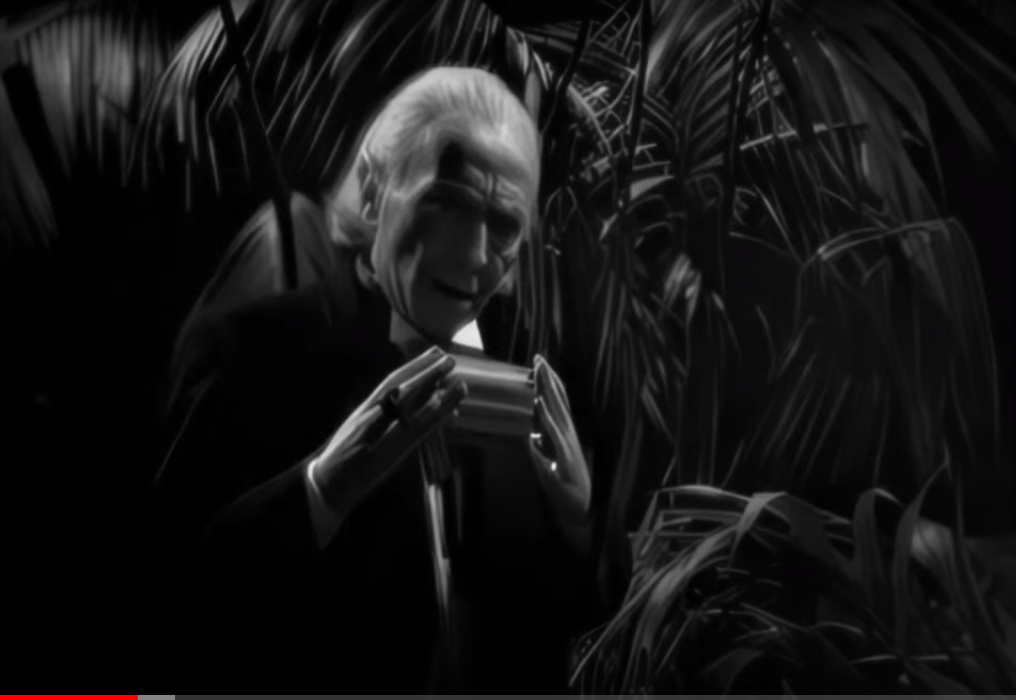
My first response on watching is they’re not that bad, but they’re not that good. Animation varies wildly in quality from story to story, making it hard to tell an overall trend towards or away from quality. However there are some good examples of how to recreate a story. “The Massacre” and “The Dalek Masterplan” for instance are incredible to watch. “The Savages” on the other hand is laughingly bad.
I chose to mostly focus on the stories not yet officially animated, so as to judge these stories by their own merit rather than compare to other animated versions of the same stories. However, it’s interesting the similarities that occur between the official animations and AI reconstructions. Non human characters (Particularly Daleks) look and move great, but people largely do not.
Animating People
Across most forms of Missing episode recovery, whether AI or human drawn, the difficulty is always animating people to show emotions and movement. Many of the official BBC animations often leave characters looking like stick figures bobbing up and down.
However one of the key things the official reconstructions provide is consistency. A human being develops a pre-existing model for characters, and because of this, these characters stay consistent over time.
AI on the other hand appears to forget things, or lose focus unless properly guided. People’s faces can change dramatically from shot to shot to the point, as in “The Savages” characters can be unrecognizable. This means, unlike with official animations, I often had to follow a story summary to figure out what was going on.
AI also forgets smaller things that make people seem human. In “The Highlanders” for instance the Doctor’s companion Polly does not blink for most of episode one, despite being in shot. This is a small detail, but throws the story into the uncanny valley – characters involve look like people but they feel wrong based on how they act.
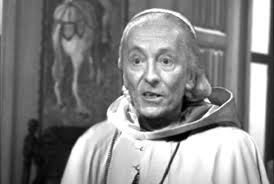
Movement is a struggle for all reconstructions because human movement is difficult to animate. Once again, “The Massacre” demonstrates small examples of movement than seem fluid, particularly in the first episode. “The Savages” on the other hand has main characters seemingly to perform scissor jump spread legged when the script call on them to walk.
How the animation occurs

Having watched many of these animations, some of means AI generated these reconstructions became clearer. A lot of these animations, especially some of the later ones, do not actually generate much new material, instead using existing material in different ways. The First Doctor saying goodbye to Susan in the TARDIS, from Episode 6 of the Dalek Invasion of Earth, for instance is frequently re-used. This scene is redubbed multiple times in the reconstructions, when a missing story needs a scene of William Hartnell standing alone in the TARDIS.
Another method is using the telesnaps, and slightly animating the mouth and face. This creates a sense of fluidity and movement, but a very limited one. This is particularly noticeable in the Space Pirates. The resconstructions rely on switching between static photos of one cast member with mouths moving. On the one hand, this is no worse than the telesnaps, but the telesnaps were aware of their limitations, so often would use narration or subtitles to fill the gaps. However these reconstructions are presented as the most life like renditions of the missing episodes. As the original story did not have subtitles or narration, therefore, they are not allowed. As a result the story is incomprehensible.
Benefit – it exists
But despite the complaints, there is a significant benefit in these reconstructions. And that’s the fact that they exist.
Currently nine missing stories have not been officially animated by the BBC. I would love for all missing stories to be animated. However, the reality is most of the stories remaining might be too costly to animate.
Of the nine stories, six are pure historicals – stories with no science fiction elements apart from the TARDIS and its crew. These stories tended to have a larger number of human characters than stories with monsters, and a human being with their range of emotions is harder to animate than a Dalek.
Historicals also tend to have more detailed and complex scene change. A story in the future can replicate cold, grey corridors throughout a space colony. Historicals however must recreate significant locations in the world at particular times in history. Having to recreate 15th century France, for instance, is made up of multiple distinct locations. This makes historical stories more time consuming and therefore costly to animate. Therefore, despite stories being reanimated for almost twenty years now, the total number of historical episodes animated have been two – both missing episodes of the Reign of Terror.
For the remaining three stories, the limited human cast and isolated space station locations makes Wheel in Space relatively simple to animate. The Space Pirates, may also be animated as the story focusing mostly on space ships should make some aspects of the design easier to manage.
That just leaves The Dalek Masterplan¸ a massive twelve episode story, with a one episode prequel, where the Daleks chase the Doctor throughout time and space. The cast is huge, and while it is not a historical, the story would require animated sets of ancient Egypt during the building of the pyramids. None of this would be easy to do on the current BBC animation budget.
Therefore, it appears of the remaining nine missing stories, only two are highly likely to be animated.
And this is where AI can play a role. As AI does not rely much people, it means the costs to recreate a story like the Dalek Masterplan is significantly easier and cheaper than hiring a production studio to make it. While the end result is not as good as a professionally animated episode, for stories where hiring professional animations is not feasible, this is one way for people to observe a version of a story we otherwise cannot access.
Ultimately the frustrating thing about these reconstructions is they’re not allowed to be what they are. If they were simply an attempt to make otherwise lost stories more accessible, without any pretention or idea of superiority they would be fine. There are no shortages of fan made reconstructions, which vary in quality, but are all warmly received because they don’t pretend to be more than fan made animations. They are no better or worse than any other reconstructions.
If Levine’s reconstructions were presented with the same humbleness, the response would be more positive. If Leveine would present it as a project, and be accepting of others not needing to accpet them, there would be less retaliation online. But they aren’t presented as a fun way to view a loss episode. The reconstructions are presented as the only correct way to view the stories, superior than any other effort. In fact, he considers the stories no longer lost due to his AI reconstructions.
But by doing so, he puts the reconstructions on a pedestal of perfection. But they aren’t perfect, not by a long shot. By Leveine presenting these as perfect, he ultimately encourages people to notice how they are lacking by comparing to perfection. In comparison, more humble attempts of reconstruction, by presenting themselves as not the best, encourage people to notice what they do right.
So, try to enjoy the reconstructions for what they are. Some are surprisingly good – especially The Dalek Masterplan and The Massacre, and it’s a chance to see stories animated that you may not get to see animated elsewhere. But try to filter out all the rhetoric about how amazing and perfect they should be, and just enjoy them as they are.
 (2 / 5)
(2 / 5)
Related posts:
Movies n TV
Wheel of Time A Question of Crimson Is a Political Espionage Delight
Published
2 weeks agoon
March 17, 2025Episode two of Wheel of Time felt like the beginning of a long journey. Stories are unfolding, lives are changing, and blood is spilling.
Let’s discuss.
The story
We begin this episode in the past with Elayne’s mother, Queen Morgase. It turns out her rise to the throne was a bit, shall we say, cutthroat. So when she shows up at the White Tower, Siuan is concerned.
She might have reason to be, too.
Meanwhile, Rand, Egwene, Moiraine, Lan and Aviendha are in the Spine of The World. As they travel through some of the most breathtaking lands I have ever seen on a TV show, Egwene is plagued with nightmares. We think at first that’s just her trauma working itself through her system. But we soon find out that it might not be that straightforward.
Finally, Perrin returns home to heal after his hand is almost cut in half. But when he gets there he finds the town has been infested by Children of The Light. And they’re looking for him.
What worked
There was something heartwarming in this episode about political espionage and choking religious persecution. And that is Elayne’s relationship with her family.
I have consumed a lot of fantasy content with royal families. And I have never once heard a princess call her mother ‘Mum’. I’ve never seen royal siblings get along. And I have sure as hell never seen a princess have a good relationship with her step-parent.
This was refreshing. Even though Queen Morgase is kind of a horrible person she seems like a good mother. And that’s an unexpected delight.

Of course, this is just one storyline among many. And while this can sometimes be overwhelming, in this case it wasn’t.
I’ll be honest, some of these storylines are going to drag for me. I know this because I’ve read some of the Wheel of Time books and I have an idea that not all the characters exactly pique my interest.
No one likes all the characters. No one likes all the storylines. While I am here for the political espionage between Queen Morgase and Siuan, not everyone likes it. While others might be fascinated with Selene trying to win Rand back, I couldn’t care less.
Having multiple storylines keeps everyone’s attention better. So long as things don’t get out of hand. Things can easily get out of hand. But this seems to be managed well.
So far.
What didn’t work
As I mentioned above, I’m not thrilled with Rand’s story at this point. And while it’s fine to not like a storyline when there are this many to choose from, it’s not fantastic that the one I like the least is the one involving our two main characters. And anytime we were with the team at the Spine of The World, the only thing that brought me joy was Moirain’s hat. It reminded me of Stockard Channing’s hat in Practical Magic.
The problem is that Rand is Charlie Brown with controversial magical powers. He is boring, serious, and pessimistic.
And yes, I understand that he has a heavy emotional burden and he’s the Dragon Reborn and that’s quite taxing and all. But let’s be fair, there isn’t a single person in this show that doesn’t have a heavy burden. And most of them manage to be fun occasionally.

All that being said, this episode of Wheel of Time did exactly what it needed to do. It set up conflicts at each of the three locations. It established emotional ties between the characters and the events. And it established goals for everyone.
This was, in short, a solid episode. Not groundbreaking, not mind-blowing or life changing. It was simply good. It was entertaining and moved the plot forward.
Well done.
 (3.5 / 5)
(3.5 / 5)
Wheel of Time is back for season three. There are mixed feelings regarding this. Last season, there were some serious pacing issues. And some serious sticking to the book’s storyline issues. But we’re two seasons in, and we don’t give up so easily. So let’s dive into episode one, To Race the Shadow.
By the way, I highly recommend watching this episode with the subtitles on. You’ll see why.
The story
We begin this episode with Liandrin facing a trial of sorts for her rampant betrayal. She does her best to gaslight her Aes Sedai sisters into thinking that Siuan Sanche is the real traitor.

When that doesn’t work, she reveals how many Black Aes Sedai have actually infiltrated the tower.
Spoiler, it’s a lot.
In the aftermath, our whole team gathers to drink and enjoy one night of relaxation before they head out to the Tear to form an army for Rand. All is going well until they’re attacked by myriad creatures and a sentient axe.
What worked
This episode was long. It had a run time of an hour and eleven minutes. And a lot of that run time was spent in heavy dialog scenes.
Fortunately, these were well-done scenes.
If you’re going to have a lot of talking scenes, there are good ways and bad ways to do it. Last season, we saw lots of examples of the bad way to do it. But this episode did it well. For one thing, other things were going on while conversations were taking place. The characters are drinking, playing games, walking through an interesting city. And the scenes themselves didn’t stretch out. They weren’t repetitive. We heard what the character had to say, then we moved on.
It was also nice that the point of these scenes wasn’t just info dumps. We had character development. We had romantic interactions. We had plot development and foreshadowing.
Overall, this episode felt like what it was. A moment of calm before a storm.
Taking a step back, I’d be remiss if I didn’t address the fight scene at the start of the episode. Because it was epic.
The magic looked amazing. The martial arts that went along with it looked fantastic. The costumes were beautiful. It was just incredibly fun to watch.
More than that, it was emotional. We lost some characters in that fight that were important. And it was clearly emotionally shattering for many of our characters, who found themselves betrayed by people they trusted.
So many of them.
It was a great way to open the season.
What didn’t work
Despite that, this episode wasn’t without its flaws.
First off, there were a lot of dialog scenes. And they were good scenes, as I’ve already discussed. But it was one after another after another. And when your episode is, again, an hour and eleven minutes, it’s maybe a little much to have so much chit-chat. Couldn’t some of these conversations, important as they were, have been moved to maybe another episode?
Finally, I want to talk about Egwene’s travel through the arches.

I feel like maybe there were some deleted scenes here. Because there must have been more to that visit than what we saw, right?
We could have seen Egwene battle Rand. That would have been badass and emotionally devastating. We could have seen her with a quiet life with Rand back home at the Two Rivers. We could have seen anything except for the quick clip of Rand in a bloody river, followed by Egwene being shoved back out in a bloody shift.
No products found.
Bad job. But at least it wasn’t an extended scene of Moiraine collecting bathwater, and then taking a bath while looking sad. If we’d started this season with another scene like that, it might have broken my brain.
Amazon dropped the first three episodes at once. So we’ll be back soon to talk about episode two. See you then.
 (4 / 5)
(4 / 5)




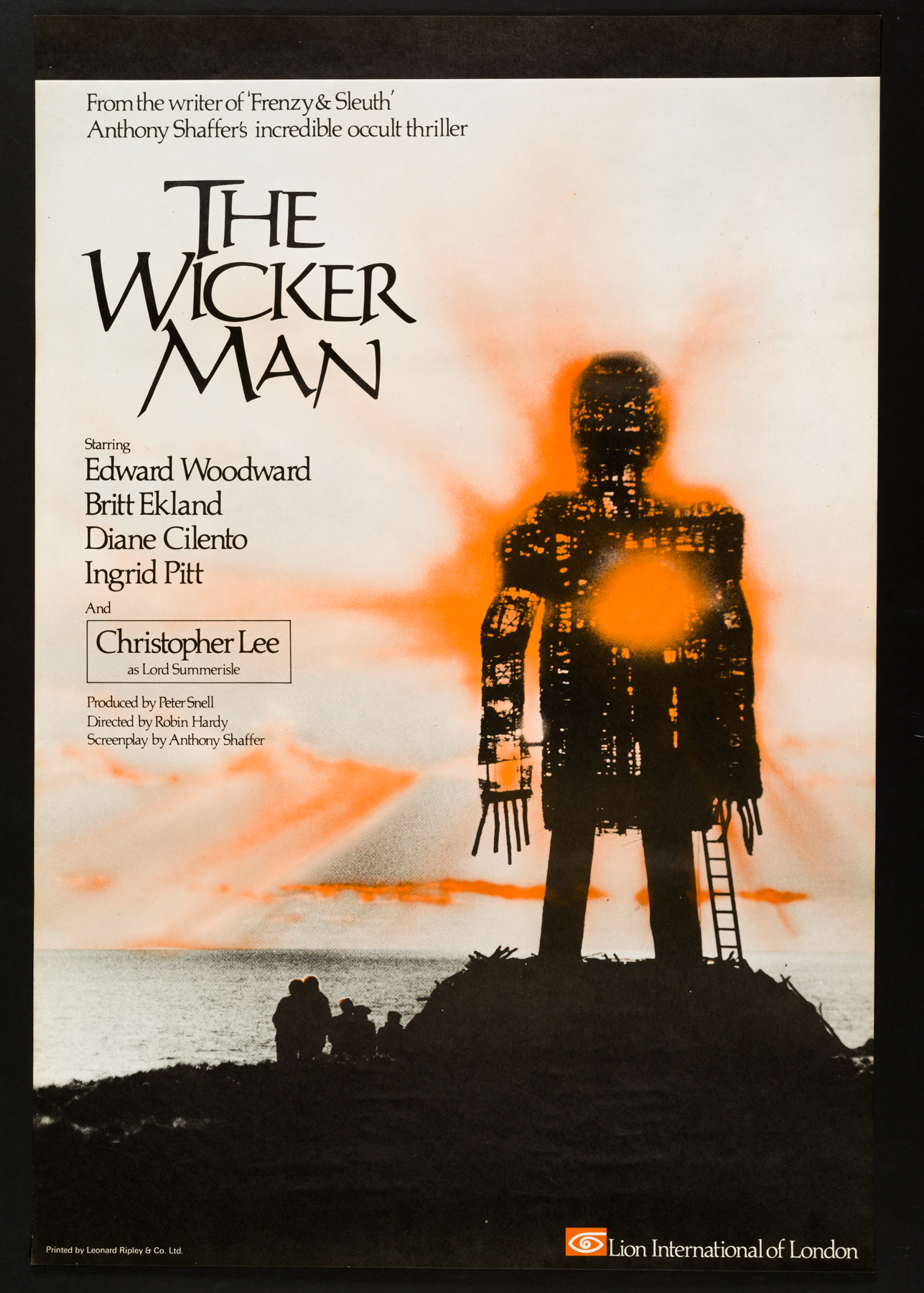
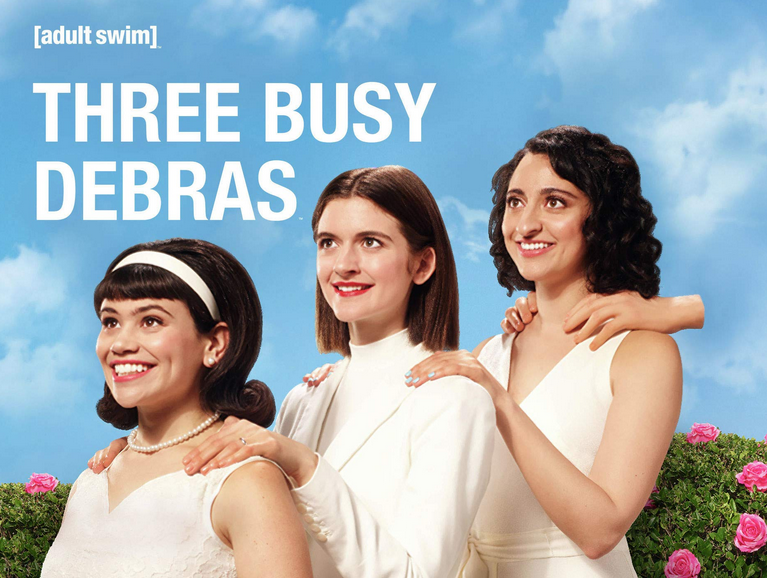
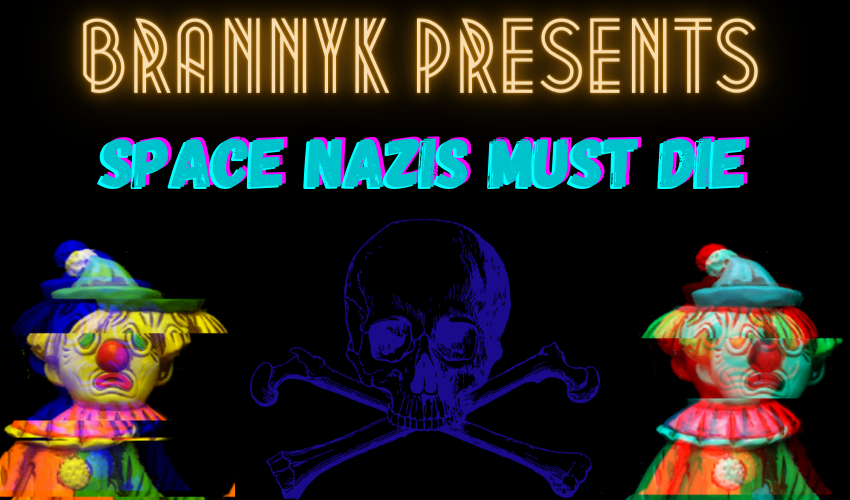
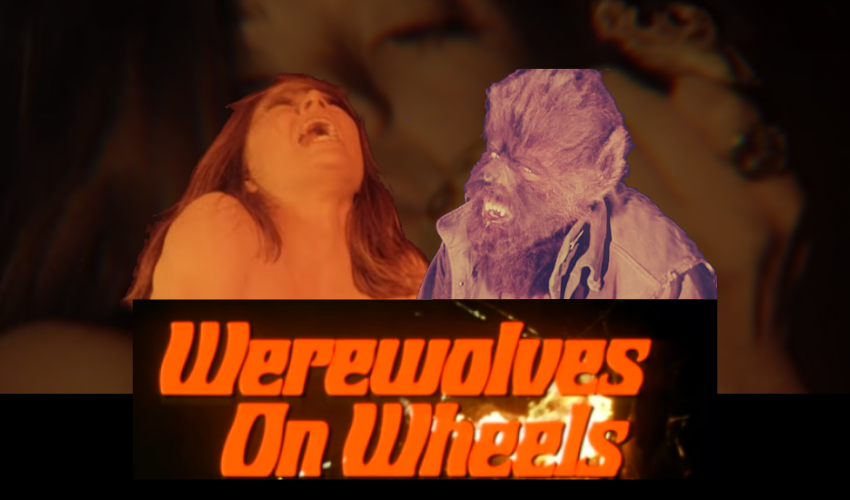

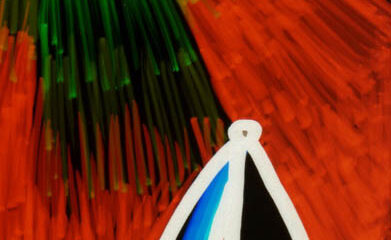

John Combo
February 29, 2020 at 12:54 pm
Even the trailer is awesome! They actually put this in line with The Road Warrior and The Terminator! I’m not even sure if they weren’t trying to be serious! Awesome review!
Patricia Dartt
March 1, 2020 at 2:56 pm
Awesome review. Actual thought on the movie not just glossed over fun or not fun. Not just talk about the visual aspects or acting. I like that you really researched here. You also mentioned the typical acting and cinematography and fun factors anyone would expect. Good job.
Pingback: When Films Go Too Far I Can Help - Haunted MTL